South Africa’s Signature Drinks: Mampoer, Van der Hum, Witblits, and Umqombothi
Mampoer is another traditional South African spirit with similarities to Witblits. Like Witblits, Mampoer is a potent distilled beverage known for its high alcohol content.
Mampoer is the fruitier alternative to witblits, and is made from peach, apricot, litchi and other available fruits. It is said to be named after the Pedi Chief Mampuru, and is most commonly consumed in the northern parts of South Africa, though it can also be bought online. Groot Marico is a good place to try mampoer in South Africa.
Here’s an overview of Mampoer:

Characteristics of Mampoer:
- Base Ingredient:
- Mampoer is typically made from fermented fruits, with a preference for stone fruits like peaches or apricots. However, other fruits such as apples, pears, or grapes can also be used.
- Distillation:
- The production of Mampoer involves distillation, a process that concentrates the alcohol content by heating the fermented fruit mash and collecting the vapor. This process separates the alcohol from water and other components, resulting in a high-proof spirit.
- High Alcohol Content:
- Mampoer is renowned for its high alcohol content, often exceeding 50% alcohol by volume (ABV). The potency is a defining characteristic of this traditional spirit.
- Clear and Colorless:
- Similar to Witblits, Mampoer is clear and colorless, resembling traditional moonshine or white spirits.
- Artisanal Production:
- Mampoer is often produced on a smaller scale, emphasizing an artisanal or homemade approach. It has historical roots in rural areas, where families would craft it for personal use or communal celebrations.
- Cultural Significance:
- Mampoer has cultural significance in South Africa, particularly among those who appreciate traditional spirits and beverages. It is sometimes associated with social gatherings, festivals, or cultural celebrations.
- Flavor Profile:
- The flavor profile of Mampoer can vary based on the fruit used in fermentation. It typically has a strong and fruity taste, with nuances of the specific fruit coming through.
Legal Considerations:
As with Witblits, the production and sale of Mampoer are subject to regulations and legal restrictions. In recent years, there has been a push to regulate and legalize the production of traditional spirits, ensuring adherence to quality and safety standards.
It’s important to consume Mampoer responsibly, given its high alcohol content. Traditionally, Mampoer is enjoyed neat, sipped slowly to appreciate its robust flavor. Like many traditional spirits, it has a cultural richness and historical significance in South Africa.
A Deep Dive into Van der Hum A South African Brandylike Liqueur
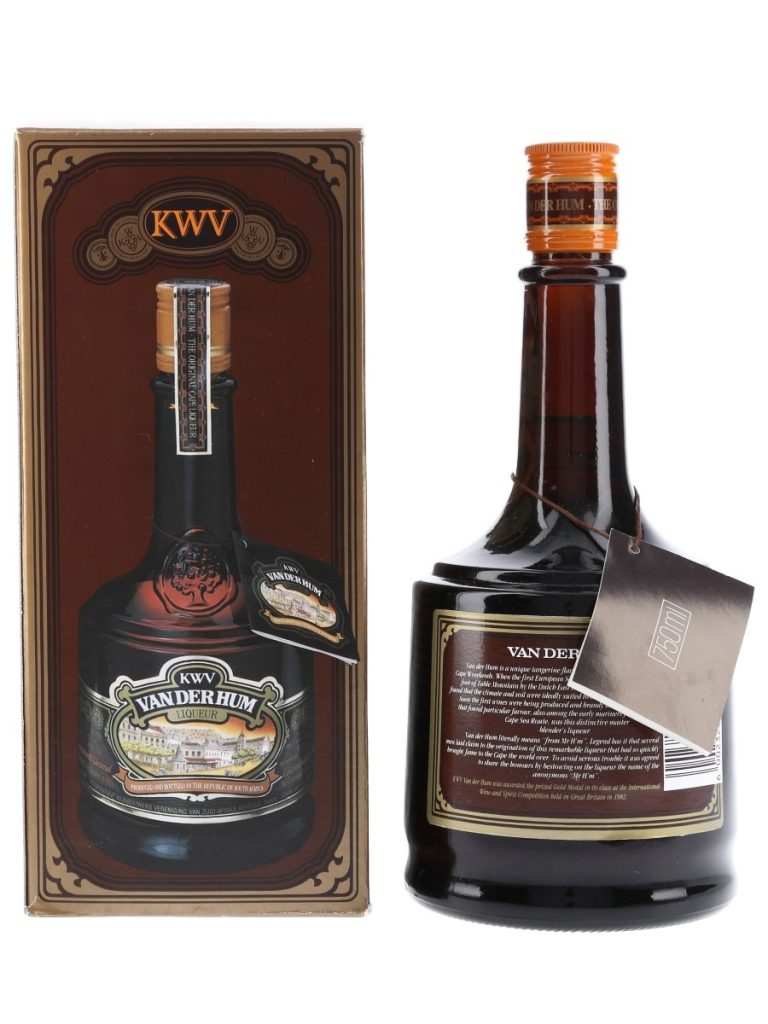
Van der Hum is a South African liqueur known for its distinctive flavor, which combines brandy with various spices and tangerines. The liqueur has a sweet and citrusy profile, making it a popular choice for sipping, mixing into cocktails, or enjoying as a dessert liqueur. Here’s an overview of Van der Hum liqueur:
Characteristics of Van der Hum Liqueur:
- Base Ingredient:
- The main ingredient in Van der Hum liqueur is brandy. This brandy serves as the base for the infusion of spices and tangerines.
- Citrus and Spice Infusion:
- What sets Van der Hum apart is its infusion of tangerines and a blend of spices. The spices can include cinnamon, cloves, and other aromatic botanicals, giving the liqueur a warm and flavorful character.
- Sweetness:
- Van der Hum is sweetened to balance the bold flavors of the brandy, spices, and citrus. The sweetness adds a dessert-like quality to the liqueur.
- Alcohol Content:
- Like many liqueurs, Van der Hum has a lower alcohol content compared to straight spirits. It typically falls within the range of 20% to 30% alcohol by volume (ABV).
- Color:
- The liqueur has a rich amber or golden color, influenced by both the brandy and the spices used in the infusion.
- Versatility:
- Van der Hum can be enjoyed in various ways. It is commonly sipped on its own as a digestif, served over ice, or used in cocktails and mixed drinks.
Serving and Cocktails:
- Neat or on the Rocks:
- Van der Hum can be enjoyed neat, at room temperature, to fully appreciate its complex flavors. Alternatively, serving it over ice can slightly dilute the liqueur while maintaining its character.
- Cocktails:
- Van der Hum can be a delightful addition to cocktails. It pairs well with other spirits, fruit juices, or soda water. For example, it can be used in a variety of citrus-based cocktails or in creative mixes with ginger ale.
- Dessert:
- Given its sweet and flavorful profile, Van der Hum is often used as an ingredient in desserts. It can be drizzled over ice cream, used in sauces, or incorporated into baked goods.
Availability:
Van der Hum liqueur is popular in South Africa, and some brands produce variations of this liqueur. It may be available in well-stocked liquor stores or specialty shops that carry a diverse selection of spirits. Keep in mind that availability may vary depending on your location.
Witblits – A South African Grape-Fermented Brandy
Witblits is a traditional South African spirit known for its high alcohol content. The name “Witblits” translates to “white lightning” in Afrikaans, reflecting its clear and potent nature. It is a type of brandy or moonshine that has historical roots in South Africa, particularly in the Western Cape region.
Afrikaans for “white lightning” (and also known as firewater), witblits is a grape-fermented amateur brandy that definitely packs a punch. It’s mostly produced and consumed in the Western Cape and is our version of American moonshine. Grundheim Wines in the town of Oudtshoorn, Western Cape, makes traditional witblits to taste and purchase.
Witblits, a potent liquor with a high alcohol content, serves multiple purposes beyond just consumption:
- Drinking: Witblits is primarily produced for consumption and is often enjoyed during social gatherings or moments of relaxation.
- Cleaning Agent: Its high alcohol content makes Witblits effective for cleaning and stain removal. Its strong smell and quick evaporation also contribute to its deodorizing properties.
- Medical Applications: Due to its disinfectant properties, Witblits can be used to sterilize equipment or areas where skin will be pierced, reducing the risk of infection.
- Herbal Remedies: The alcoholic content of Witblits makes it a suitable solvent for creating tinctures, which can preserve and enhance the effectiveness of herbs and flowers used in traditional remedies.
In addition to its practical uses, Witblits is promoted and celebrated through various marketing initiatives:
- Tastings and Tours: Witblits producers in the Western Cape offer tastings and tours to showcase their brands and educate consumers about the liquor-making process.
- Witblits Festivals: Events like the annual Witblits Festival in Philippolis, Free State Province, provide opportunities for enthusiasts to sample and purchase different varieties of Witblits. These festivals often feature unique activities like the “bokdrol spoeg” competition, where participants compete in spitting Witblits-soaked kudu droppings.
Through these promotional efforts and cultural events, Witblits has become not only a popular beverage but also a symbol of tradition and community celebration in South Africa.
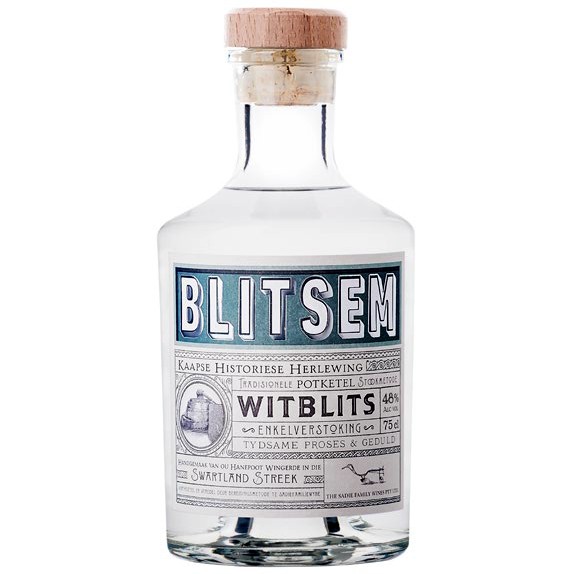
Here’s an overview of Witblits:
Characteristics of Witblits:
- Base Ingredient:
- Witblits is typically made from fermented fruits, with grapes being a common choice. However, it can also be produced from other fruits, such as peaches or apricots.
- Distillation:
- The production of Witblits involves distillation, a process that concentrates the alcohol content by heating the fermented liquid and collecting the vapor. This process separates the alcohol from the water and other components, resulting in a high-proof spirit.
- High Alcohol Content:
- Witblits is renowned for its high alcohol content, often exceeding 50% alcohol by volume (ABV). This makes it a potent and strong spirit.
- Clear and Colorless:
- True to its name, Witblits is clear and colorless, resembling traditional moonshine or white spirits.
- Artisanal Production:
- While commercial versions of Witblits exist, it is often produced in smaller quantities on a more artisanal or homemade basis. It has a history of being crafted in rural areas by individuals or families for personal use.
- Cultural Significance:
- Witblits has cultural significance in South Africa, particularly among those who appreciate traditional spirits and beverages. It is sometimes associated with social gatherings and celebrations.
- Illicit Production:
- Historically, Witblits was often produced illicitly, especially during periods when regulations and restrictions were in place. Homemade versions were crafted away from the authorities’ scrutiny.
- Flavor Profile:
- The flavor profile of Witblits can vary, but it generally has a strong and robust taste, with notes of the base fruit used in fermentation.
Legal Considerations:
It’s important to note that the production and sale of Witblits are subject to regulations and legal restrictions. In recent years, there has been an effort to regulate and legalize the production of traditional spirits in some regions, ensuring quality and safety standards.
As with any high-proof spirit, Witblits should be consumed responsibly, considering its potency. It may be enjoyed neat or used in various cocktails, and its artisanal nature often adds to its appeal among those who appreciate traditional and craft spirits.
South Africa Traditional Beer – Umqombothi
Umqombothi is a traditional South African beer that holds cultural and ceremonial significance. It is often associated with the Zulu and Xhosa people, but variations of this beer can be found in different regions and among various ethnic groups in South Africa. Umqombothi is typically brewed using a combination of malted and unmalted grains, and it undergoes a fermentation process to produce a mildly alcoholic beverage with a unique taste. Here’s an overview of how Umqombothi is traditionally prepared:
How to Make Umqombothi:
Ingredients:
- Malted and unmalted grains (such as sorghum, maize, and wheat)
- Water
- Sugar (optional)
- Yeast (wild yeast strains are traditionally used)
- Special herbs (optional, for flavoring)
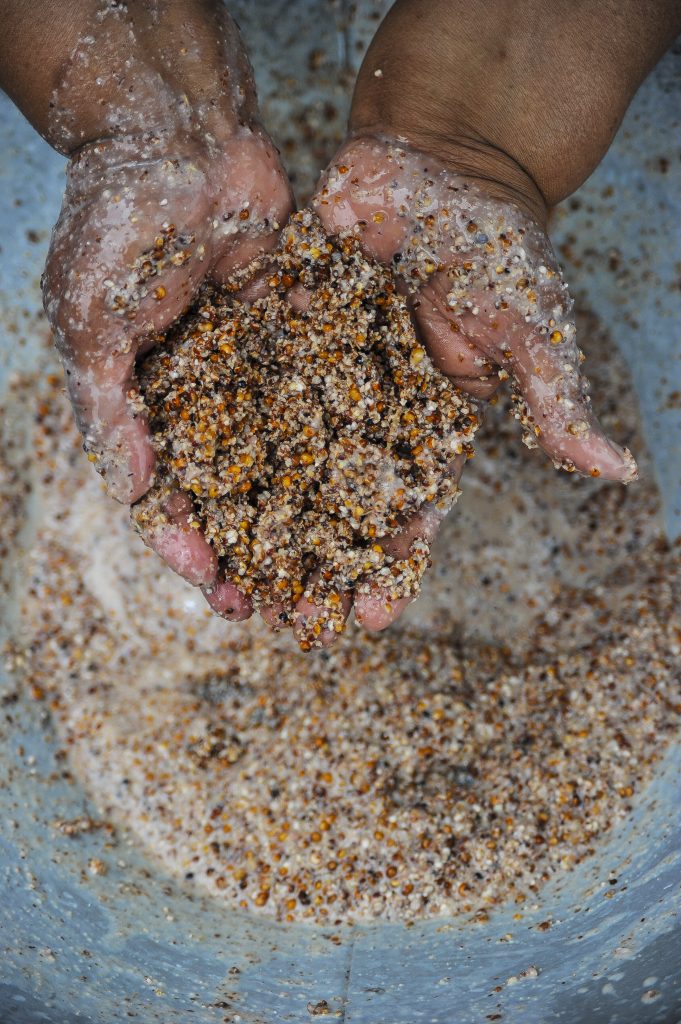
Instructions:
- Malting the Grains:
- Start by malting some of the grains. This involves soaking the grains in water until they sprout, and then drying and roasting them. This process activates enzymes that convert starches into sugars during brewing.
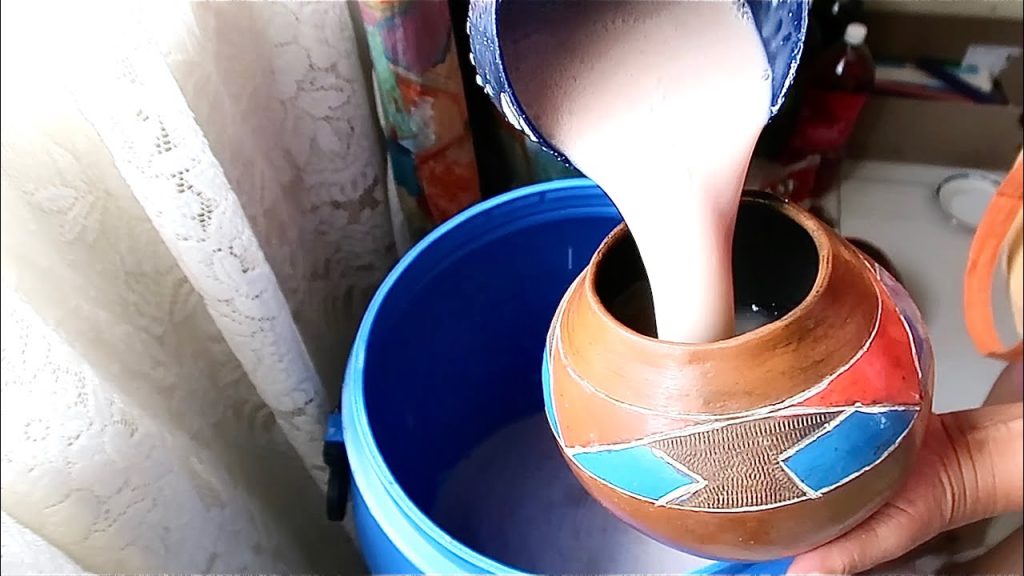
- Mixing the Grains:
- In a large container or pot, mix the malted and unmalted grains. The ratio of malted to unmalted grains can vary based on personal preference.
- Boiling Water:
- Bring water to a boil, and then pour it over the mixed grains in the container. This creates a mash, and the hot water helps extract sugars from the grains.
- Cooling the Mash:
- Allow the mash to cool to a temperature suitable for fermentation. The aim is to create an environment where yeast can thrive.
- Adding Wild Yeast:
- Traditional Umqombothi relies on wild yeast strains for fermentation. Allow the mixture to ferment naturally by exposing it to the airborne yeast. This fermentation process can take several days.
- Straining:
- Strain the fermented liquid to separate it from the solid grain particles. The liquid is the Umqombothi beer.
- Second Fermentation (Optional):
- Some variations of Umqombothi undergo a second fermentation, allowing the beer to develop more complex flavors. This step is optional.
- Sweetening (Optional):
- Sugar can be added to sweeten the Umqombothi if desired.
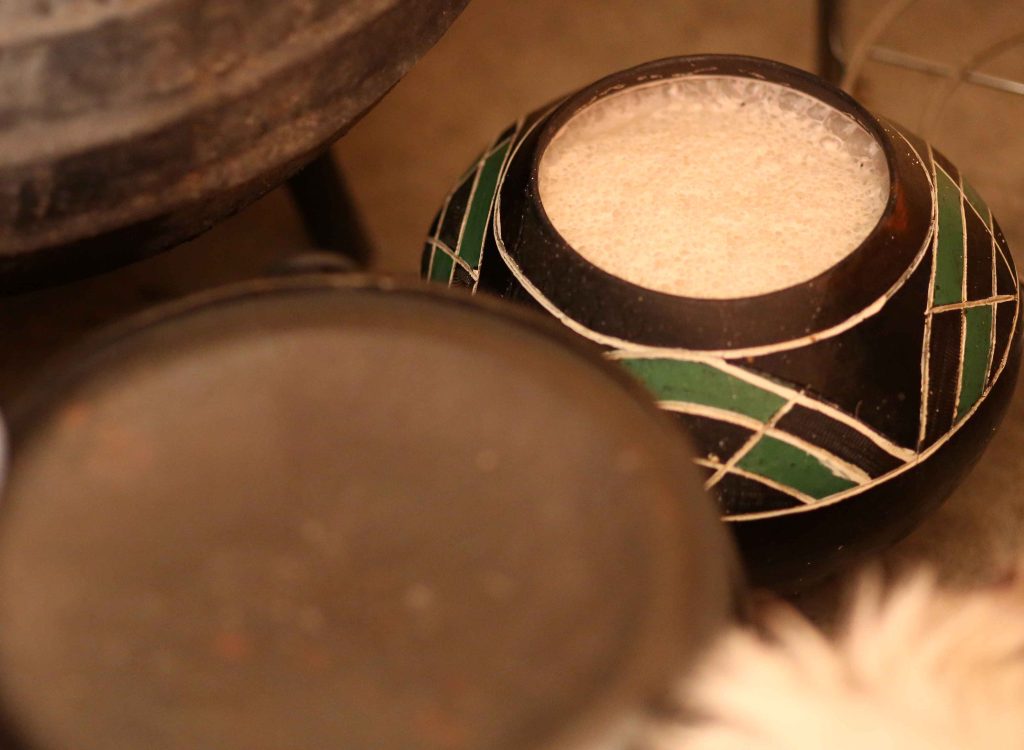
- Herbs (Optional):
- Some recipes include the addition of special herbs for flavoring.
- Bottling:
- Transfer the strained Umqombothi into bottles or containers for storage.
- Maturation:
- Allow the Umqombothi to mature for a few days. This process can enhance the flavor and carbonation.
- Serve:
- Serve Umqombothi chilled and enjoy this traditional South African beer.
It’s important to note that the brewing process for Umqombothi may vary among different communities, and recipes are often passed down through generations. Umqombothi is not only a beverage but also a cultural symbol, often associated with rituals, ceremonies, and social gatherings.
Also Read On Exploring the Venda, Ndebele, and Tsonga People of South Africa
Add a Comment
You must be logged in to post a comment.
